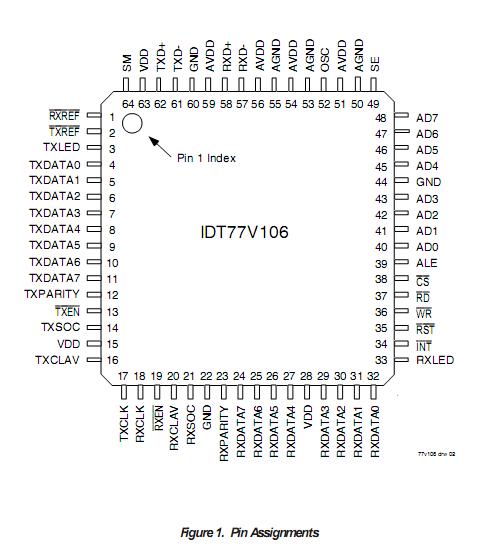IDT77V106L25: Features: •Performs the PHY-Transmission Convergence (TC) andPhysical Media Dependent (PMD) Sublayer functions of thePhysical Layer•Compliant to ATM Forum (af-phy-040.000) and ITU-T I.43...
floor Price/Ceiling Price
- Part Number:
- IDT77V106L25
- Supply Ability:
- 5000
Price Break
- Qty
- 1~5000
- Unit Price
- Negotiable
- Processing time
- 15 Days
SeekIC Buyer Protection PLUS - newly updated for 2013!
- Escrow Protection.
- Guaranteed refunds.
- Secure payments.
- Learn more >>
Month Sales
268 Transactions
Payment Methods
All payment methods are secure and covered by SeekIC Buyer Protection PLUS.

 IDT77V106L25 Data Sheet
IDT77V106L25 Data Sheet






